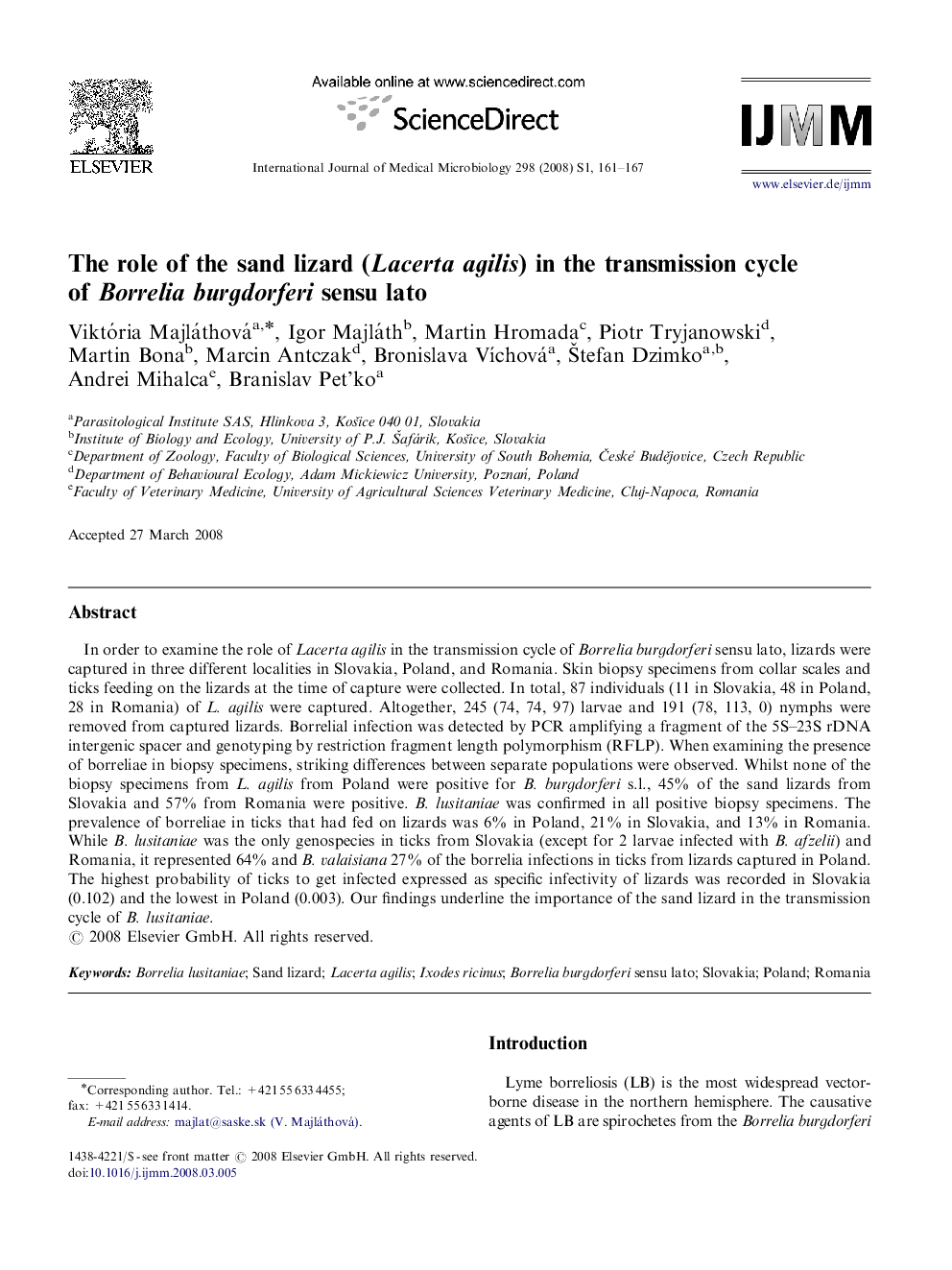| Article ID | Journal | Published Year | Pages | File Type |
|---|---|---|---|---|
| 2054965 | International Journal of Medical Microbiology | 2008 | 7 Pages |
In order to examine the role of Lacerta agilis in the transmission cycle of Borrelia burgdorferi sensu lato, lizards were captured in three different localities in Slovakia, Poland, and Romania. Skin biopsy specimens from collar scales and ticks feeding on the lizards at the time of capture were collected. In total, 87 individuals (11 in Slovakia, 48 in Poland, 28 in Romania) of L. agilis were captured. Altogether, 245 (74, 74, 97) larvae and 191 (78, 113, 0) nymphs were removed from captured lizards. Borrelial infection was detected by PCR amplifying a fragment of the 5S–23S rDNA intergenic spacer and genotyping by restriction fragment length polymorphism (RFLP). When examining the presence of borreliae in biopsy specimens, striking differences between separate populations were observed. Whilst none of the biopsy specimens from L. agilis from Poland were positive for B. burgdorferi s.l., 45% of the sand lizards from Slovakia and 57% from Romania were positive. B. lusitaniae was confirmed in all positive biopsy specimens. The prevalence of borreliae in ticks that had fed on lizards was 6% in Poland, 21% in Slovakia, and 13% in Romania. While B. lusitaniae was the only genospecies in ticks from Slovakia (except for 2 larvae infected with B. afzelii) and Romania, it represented 64% and B. valaisiana 27% of the borrelia infections in ticks from lizards captured in Poland. The highest probability of ticks to get infected expressed as specific infectivity of lizards was recorded in Slovakia (0.102) and the lowest in Poland (0.003). Our findings underline the importance of the sand lizard in the transmission cycle of B. lusitaniae.
